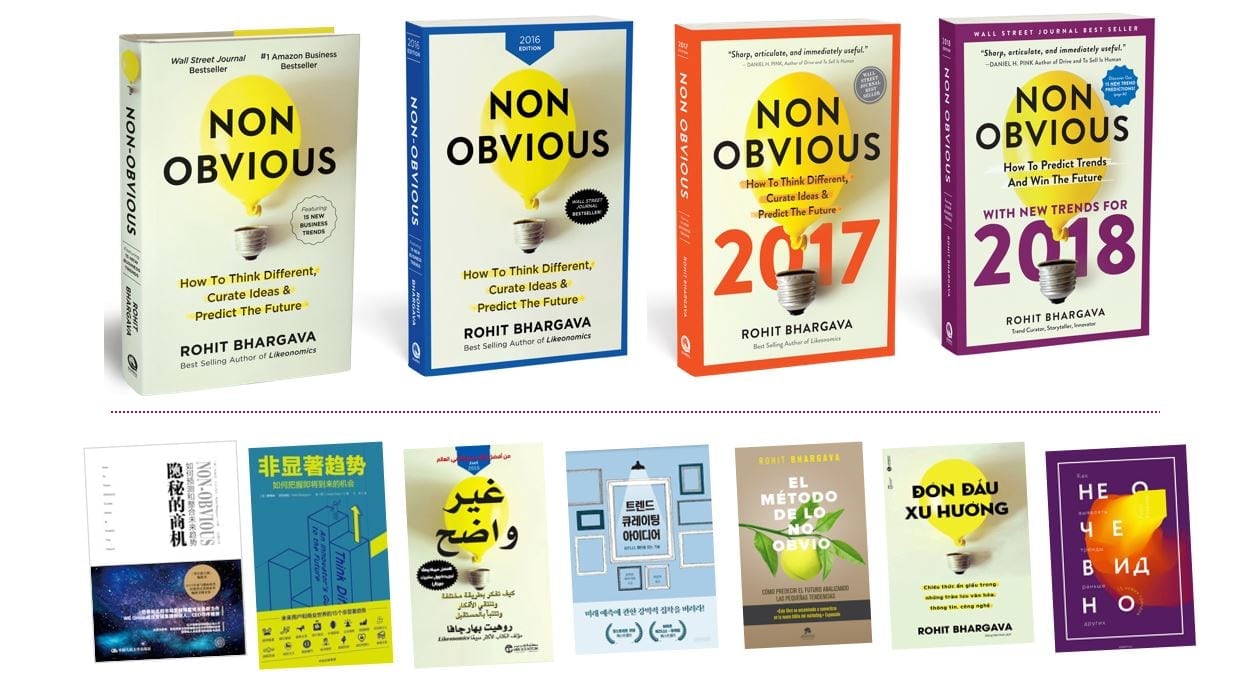I have often resisted describing myself as a futurist.
To me, a futurist was someone who offered an ambitious prediction of the far future — usually focusing on things like energy produced by bio luminescent bacteria or 3D printed houses. Instead, I have spent close to the past decade predicting the near future.
Every year, my Non-Obvious Trend Report features 15 new predictions for the year ahead along with an action guide on how to use the trends. For the first few years, I shied away from calling myself a “futurist” because it felt too grandiose. Those early trends were heavily focused on marketing and business, a far cry from the big global issues most futurists seemed to focus on.
The fifth year was the one where I reached a tipping point both in audience (passing half a million readers online) and in the scope of my trends. That year the trends were split into five categories: Culture & Consumer Behaviour, Marketing, Media, Technology and Economics. It was also the year I decided to start a company focused on helping brands and leaders learn to see what others miss.
Since then, there have been three more updates to the trends and the 2018 Edition is now printed and ready for release a month from today. I still resist the idea of labeling myself a futurist – but I have learned a few things along the way about predicting the future that I think are worth sharing:
1. Predictions are different than trends.
At the end of every year, predictions become plentiful. Unfortunately, most don’t deserve to be called trends. If, for example, you read that “experimentation with drone deliveries will continue to grow,” that is a prediction and most likely true. It isn’t, however, a trend. The trend might be something like “Disruptive Distribution” – a trend I first wrote about several years ago to describe how the way we get products and services delivered to us is shifting in fundamental ways. Drone deliveries are an EXAMPLE of that trend.
2. Trends are not rules, they are sparks.
It is tempting to see trends as strict ways of describing the world, but that is never the case. Trends give rise to “anti-trends,” and there are always exceptions to every rule. The best way to use trends is to let them offer a spark for a new way of thinking. Structuring brainstorms or strategy around trends can be useful because they give you a new perspective on seeing the world and help you ask better “what if” questions.
3. Success comes from breaking out of industry bias.
One thing I have seen over and over again with trend predictions is that they suffer from a sort of industry myopia. Financial industry groups look to financial industry trend predictions. Retail does the same. The problem this creates is obvious – it’s hard to innovate when you’re only looking at the most innovative peers within a subset. The best ideas sometimes have to come from outside an industry.
Over the next several weeks, I will be sharing new trend predictions from the latest 2018 report here and elsewhere online. To read new ideas before they are shared publicly, you can subscribe to my weekly insights newsletter where I send new stories every Thursday morning.







WE RECENTLY REMOVED COMMENTING - LEARN WHY HERE >